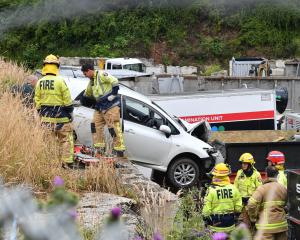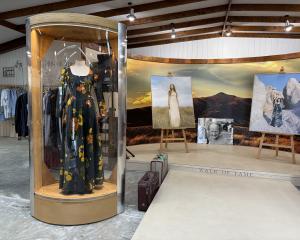
The New Zealand Sea Lion Trust was responding to concern from Otago Daily Times readers about the prevalence of sea lions on roads near Hoopers Inlet at Otago Peninsula and Smails Beach near Tahuna, on which people can drive more than 80kmh.
One reader, who declined to be named, said they were worried the Department of Conservation and the Dunedin City Council were unable to put up warning signage quickly enough.
But trust spokeswoman Jordana Whyte said it was not just a matter of having signs: people needed to use their common sense while driving.
"You can put up all kinds of signs everywhere and if you have lots and lots of signs, people tend to ignore them.
"I was out at Hoopers Inlet last week and there are definitely sea lions in very close proximity to the road, which we are well aware of and it's quite unfortunate.
"The DCC will go out and put cones out and new signs and move signs around as needed, depending on kind of where the hot spots are. They're bright orange; they're very clear."

"Frankly, if you're having a collision with an animal that can weigh hundreds of kilos, you might come off second-best in that.
"It's a very good time to remind people to take care on our coastal roads. I would say if you slow down in areas where there are signs or you do know that there are sea lions present to 30kmh, 40kmh, 50kmh, it's going to take you maybe an extra 30 seconds to get to your destination."
This year has proved a busy period for sea lion breeding in Dunedin: at least 25 pups were born, six shy of last year’s record.
"We have to remember these are an endangered species.
"Perhaps there's some different messaging that we can use, but it's getting the education and the messaging out in the community and getting people to care that there are sea lions near the road and that they should use care."
Doc's Dunedin acting operations manager Samantha Marsh said it appreciated the public’s concern for Pakake/New Zealand Sea Lions.
"We’re grateful to those who report sightings or issues. These reports help us protect this endangered species, especially during the sensitive pupping season..
"During office hours, Doc Dunedin runs a Wildlife Response system that enables us to assess situations and respond appropriately.
This may involve a ranger from our Ōtepoti office or a nearby field ranger who can attend quickly.
"After hours, we operate a duty officer system. All duty officers are trained in wildlife response and can call on key rangers when needed."












